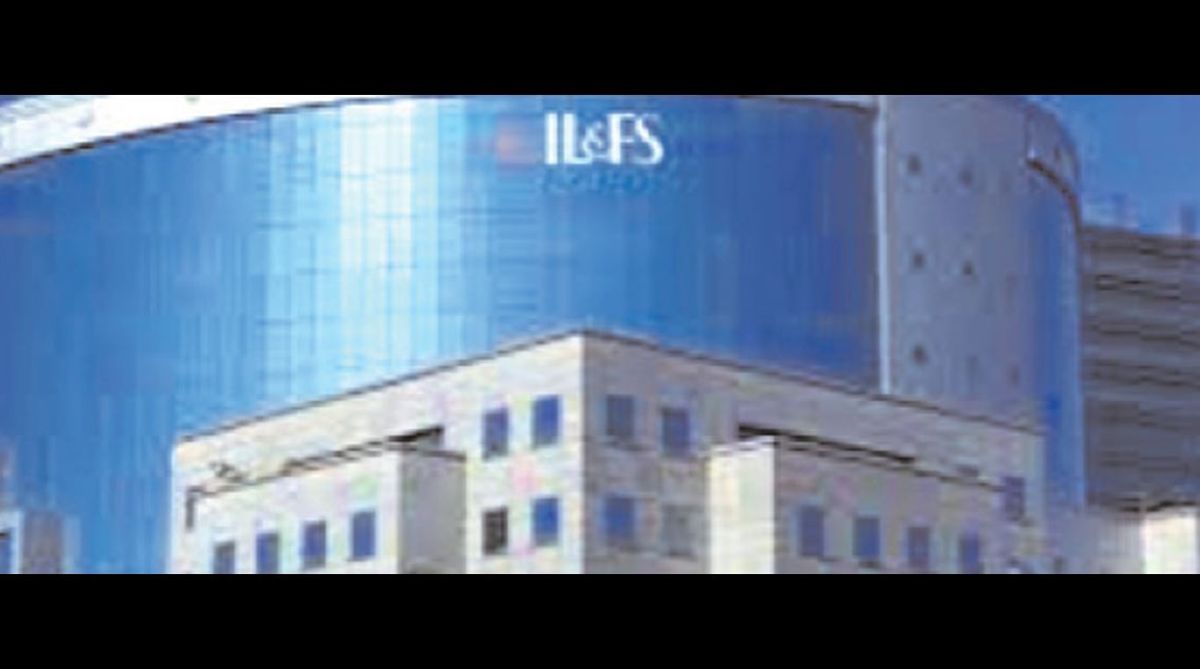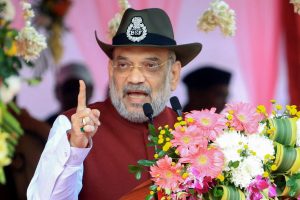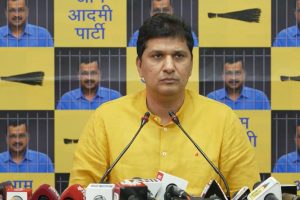Let us now visit the showpiece of the Republic of Shame, Mumbai, to the headquarters of a group company called Infrastructure Leasing & Financial Services (IL&FS). Some, like columnist Anil Dharkar, call the IL&FS as “Internal Looting and Fraud Syndicate”. In September, the nation learnt with amazing disbelief that the group was reeling under outstanding debt of a whopping Rs 91,000 crore, to repay which it was planning to sell its assets. Of the total debt, Rs 57,000 were owed to Public Sector Banks (what else?).
During another September precisely 10 years ago, the world’s financial markets had come to the brink, when a certain Lehman Brothers, with $ 639 billion in assets and $ 619 billion in debt and 25,000 employees worldwide, had filed for the largest bankruptcy in history, throwing the entire financial world into a turmoil the kind of which the world has rarely seen before. Within a week, Merryll Lynch sold itself to Bank of America for $ 50 billion and Federal Reserve had to provide emergency bailout funding of $ 85 billion to the insurance giant AIG, which had trillions of dollars in mortgages worldwide, to avoid a collapse of the global banking system.
Goldman Sachs and Morgan Stanley, two of Wall Street’s largest investment banks, followed suit ~ seeking the FED’s protection to become commercial banks. As the contagion spread, panicky investors withdrew a record $ 144.5 billion in a single day on September 17, as against only $7 billion during a typical week. On September 26, the Washington Mutual Bank went bust and three days later, the US Stock Market crashed as Congress rejected the bailout plan submitted by the Treasury, which it had to pass eventually to prevent a potential collapse of the entire global financial network.
Till that fateful week in September, people believed that financial wizards of these organisations had conjured up a new era of low-risk profits, and that American-style financial engineering was the ultimate road to prosperity for the entire world. IL&FS also made us believe that it was the ultimate in the Indian infrastructure financing and its formula was infallible, based on an impenetrable financial edifice. The CEO of Goldman Sachs used to take a salary of $ 68 million. The IL&FS CEO, Mr Ravi Parthasarathy, took Rs 26.3 crore ($ 3.65 million) after giving himself a 144 per cent rise in 2017-18 when the crisis was looming large and bankruptcy was staring at his face. He stepped down in July on “health grounds”, and the company started defaulting in its loan repayment from August.
By early September, its earlier investment-grade “AAA” rating was downgraded to D ~ “Junk” grade ~ by the rating agencies ICRA, CARE and Brickwork. Incidentally, fees of the agencies were paid by the client, but nobody, including the regulator RBI, noticed the obvious conflict of interest. The auditors, M/s Deloitte Haskins & Sells, never detected anything amiss; their fees were also paid by the company. RBI ordered a special audit only in September, when the crisis had erupted in full force, and the market regulator SEBI also started looking at the role of the rating agencies only in September. ICAI has also instituted an inquiry into the auditors’ lapses only now.
Mutual funds were rattled by the impact of the default. As panicky investors started pulling out from NBFCs and Mutual Funds, the money, debt and stock markets stumbled and crashed on September 21, with Sensex losing more than 1000 points. The Government finally stepped in on October 1, dismissed the entire IL&FS Board and appointed a new six-member Board under the chairmanship of Mr. Uday Kotak. When “a systematically important institution”, as the IL&FS has been described by the RBI, shows signs of falling, the shocks reverberate through the entire system and if it fails, chances are that the whole system would fail.
With 60 per cent of IL&FS’s borrowings being in non-convertible debenture not backed by any assets or security and subscribed mostly by pension, insurance and provident funds, in other words, savings of the poor and middle class, the Government of course cannot allow it to fail. Like the AIG, IL&FS will have to be bailed out, as usual with taxpayers’ money. Notice the uncanny similarity between what happened in Wall Street in 2008 and Dalal Street in 2018? Greed leads to disaster the same way everywhere; only, one hopes the contagion now may not be as severe as then, but the stock and money markets have been on a roller-coaster ride ever since, compounded by the rupee being on a tailspin, to which it is also contributing.
For IF&LS and its Board, it has been a systematic, organised loot of the nation, via an elegant innovative modus operandi that would put the financial crime thrillers into shame.
IL&FS was incorporated in 1987 with 40 per cent shareholding by the public sector (LIC, SBI and Central Bank) to finance infrastructure projects in the PPP mode. It claims to have financed projects worth about Rs 1.8 lakh crore. Actually it gold-plated these projects to raise huge loans from public sector banks, charged enormous commissions as project management fees that escalated the cost of these projects, and using the links of exbureaucrats it employed with gracious compensation, raised finances by cunningly projecting itself as a Government company which it was not.
In fact it engaged in plain fraud under the very eyes of the people who were supposed to regulate it. It acquired projects through Special Purpose Vehicles (SPVs) set up jointly with the state or central governments while giving the government less than 51 per cent equity so as to avoid the scope of CAG’s audit and to launder public money at will. In this way, it set up a web of 169 group companies (there probably are many more) including 135 indirect subsidiaries ~ each corresponding to an SPV for a specific project, besides six joint ventures and four associate companies.
The structure of group companies thus created was extremely opaque and murky. Partnering with the government in these projects, it gave its lenders a false impression that the risks would be underwritten by the government. Thus the subsidiaries, despite having a narrow equity base, could raise huge loans through no-holdsbarred wheeling and dealings, and in this way, on equity capital of only Rs 9.83 crore, IL&FS accumulated a mammoth Rs 91,000 crore debt, some of it being infused into their associate companies as equity. The debt-pyramid continued to rise until it collapsed under its own weight.
Again nobody noticed or raised a red flag, including the nominees of public sector organisations in its Board or bureaucrats in the Government. One of its projects, touted as a model, with guaranteed returns of 20 per cent to equity investors including IL&FS, was the 8-lane Delhi-Noida expressway, which was executed by the SPV, Noida Toll Bridge Company on land provided by the Government on a 30-year lease. Not only did the Company make huge profits on the toll, it manipulated the lease to extend it to 100 years.
Since all costs plus reasonable profits had already been recovered by 2016, well before the lease was to expire in 2031, Allahabad High Court stopped all toll collection in 2016, which was later confirmed by the Supreme Court. A similar pattern of profiteering was successfully applied in many states, like Gujarat, Tamil Nadu, Rajasthan or Andhra Pradesh, to rob the public and the public exchequer.
Gajendra Haldea, a former Planning Commission member, recalls an instance when a similar SPV called Delhi Mumbai Industrial Corridor Corporation (DMICDC) was set up jointly with the Dept. of Industrial Policy and Promotion (DIPP) for developing 24 industrial townships on this corridor, with an unsuspecting DIPP Secretary as Chairman and showing Udyog Bhavan as the address to make it appear like a government company for raising loans. The project did not take off because of resistance from the Planning Commission which detected the fraud.
Being involved in the Infrastructure Sector, IL&FS was engaged both in lending as well as execution of projects. No one again noticed the conflict of interest inherent in this dual role. As in the case of Satyam, auditors from the reputed firms never pointed out the fraudulent modus operandi. Neither the Board members nor the independent directors, who included such illustrious names as R C Bhargava, Chairman of Maruti Suzuki or Sunil Mathur, Chairman of LIC, ever red-flagged the multiple conflict of interests and the shady dealings of the company with its subsidiaries. The rating agencies were even more complicit in the entire sordid saga, and the loot was allowed to go on unhindered.
These agencies and individuals, Board members and Mr Parthsarathy, certainly owe serious explanation to the nation. If they are found lacking in their duties, they ought to be punished, irrespective of their positions and status. But the Republic of Shame ensures their lifelong immunity from any consequence of their failure to discharge their responsibilities, which affect millions of investors and take millions of taxpayers’ money. Countless such incidents of shame happen every moment each day, and the national conscience, frozen into indifference by their brazenness, refuses to be mortified. The Republic of Shame will live long.
(Concluded)
The writer is a commentator. Opinions expressed are personal.











